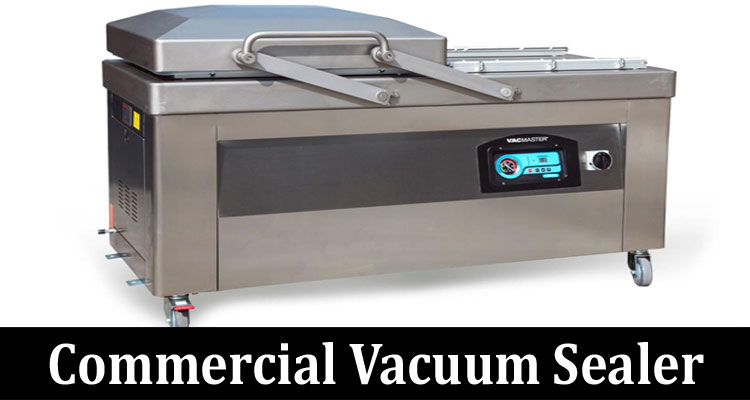A vacuum sealer is a great way to prevent food from going to waste and deteriorating in commercial kitchens. Foods that are vacuum-sealed often have a shelf life that is 3 – 5 times that of unpackaged food.
These foods will also taste fresh and better because most things that make them go bad have been taken away. This guide will explain all about a commercial vacuum sealer. Check out the reviews of the most popular vacuum sealers to find out what people think of them.
What Is a Commercial Vacuum Sealer?
A vacuum sealer first eliminates air from the surrounding area of your food before using a hot seal plate to fuse the bag’s sides and prevent air from reentering. This method prevents the decomposition or decay that occurs when food is exposed to air.
Commercial vacuum sealers generally have big sizes due to their frequent use in professional kitchens.
How to use a Vacuum Sealer?
Vacuum sealing is a way to keep and store food, from fruits and vegetables to whole meals. No matter what kind of Hoover sealer you have, the process of Hoover sealing is easy and quick. Use the directions below to figure out how to Hoover seal.
- Choose a Hoover bag that works well with your device.
- Place the food into the bag, leaving a minimum of 2″ and 3″ of the area between the bag and the top of the pouch.
- The bag’s open area should align with the vacuum sealer’s seal bar. Make sure the pouch is wrinkle-free and lays flat against the seal bar.
- Put a tight seal on the vacuum sealer’s lid. To start the sealing process on manual machines, push the “Start” button. Press down hard on the opening until the Hoover cycle starts on automatic machines.
- The bag is fused by the seal bar to form an airtight seal once all the air has been removed. Before removing and preserving your vacuum-sealed food, wait until the vacuum sealer indicates the operation is complete.
Types of Vacuum Sealers
In an industrial kitchen, there are two sorts of vacuum sealers: those with a chamber and those outside the kitchen. The ideal machine for you will rely on how much you want to seal, how often you need to package liquids, and how much money you have.
External Vacuum Sealer
Suction-based external vacuum sealers are convenient for little companies that need to vacuum-seal meals on occasion. The vacuum sealer bag is kept outside of the device while the device removes air from the bag and seals it.
They are more affordable but can’t compete with a chamber machine’s huge volume and flexibility. There is only one seal bar available, so sealing a large batch will take longer than a chamber machine.
Chamber Vacuum Sealer
Chamber vacuum sealers are ideal for businesses that regularly seal food and beverages in large amounts. These units have a chamber where the food may be placed before the air is sucked out of the chamber and the bag to create an airtight seal.
The loss of suction required to vacuum seal bags makes these machines ideal for vacuum packing liquids like sauce, marinades and soups.
Although chamber vacuum sealers cost more than external devices, they are more suitable for massive production commercial applications and offer greater versatility. Companies should get a sealer with bigger or additional seal bars to seal more than one bag at once.
You can also get a vacuum sealer with an oil pump, which will work and last even better than a dry pump unit.
Don’t Vacuum Seal These Food Items
Foods that are soft and not pasteurized, such as brie and ricotta, should not be vacuum sealed. There is a risk that these items contain anaerobic microorganisms, which can increase in the low-oxygen environment of a vacuum pouch.
Also, bacteria grow at higher temperatures, so waiting until the food has chilled to room temperature before sealing is best. It’s important to be careful and ensure food is chilling properly, away from the danger zone.
Final Thoughts
Vacuum sealers are great for many types of businesses, like meat shops or fish farms that want to ship their customers’ high-quality frozen meats or a pizzeria that wants to store a lot of their special sauce.
Vacuum-sealing food can simplify your kitchen and minimize food prices and waste. Food lasts much longer when vacuum-sealed. Whether you store vacuum-sealed food in the freezer, fridge, or pantry determines its lifespan.
When vacuum-sealed and frozen, vegetables, fish, and meats can survive 2 – 3 years, and dry items like bread can last up to 1 year.


